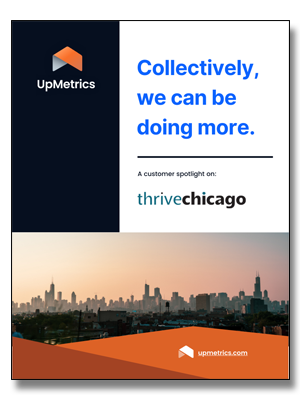4 Key Steps to Start Analyzing Your Foundation’s Impact
What kinds of metrics can you track to ensure that you are helping foster the change you hope to see in the world?
Investing in the philanthropic sector is a great start, but how can you make sure that your investments are paying dividends for the community as a whole? Here are 4 key steps for funders to start measuring their collective impact across investments.
1. Engage with your grantees to align on collective goals
Foundations should engage grantees in a conversation to align on which goals they plan to track, ultimately finding consensus across the entire portfolio. Defining goals, and the indicators that show progress toward those goals, is the key to understanding what meaningful data looks like for each organization. In addition, this conversation will ultimately empower grantees to build capacity, make informed decisions, and better tell their impact stories.
2. Empower your grantees with the tools they need to collect and analyze data
Once you have aligned on impact goals with your grantees, provide them with the tools they need to collect data and monitor those indicators that help them measure progress. Providing tools can be as simple as subsidizing their use of software, but keep in mind that that software should serve the needs of the grantee as well as the funder—after all, data collection should not be an obstacle, but rather a means to produce better outcomes based on informed decision making and resource allocation.
3. Centralize data in one place
Many grantees are overwhelmed by multiple tools and systems. This is further complicated at the Foundation level as you try to centralize data across a number of organizations.
“The YMCA is great at telling the qualitative side of the story, but I knew coming in that building a data-driven approach would be important. For my department alone, we have four different databases into which we have to enter information...and none of these databases talk to each other.”
—Jen Salerno, Director, San Francisco YMCA Youth Workforce Development
Leverage tools that simplify the data collection process and lean on experts to navigate multiple systems to ultimately funnel data from all of your grantees in one place.
4. Analyze data to measure your collective impact
Once the data is centralized, foundation executives can analyze this data and track progress towards goals across their portfolio. This analysis will provide a streamlined process to facilitate collaborative sessions about driving impact with grantees, in addition to your board and managing directors.
Learn more about how UpMetrics tools and services are helping organizations define, collect, and leverage their data to tell their stories, and drive greater impact.
August 19, 2019
